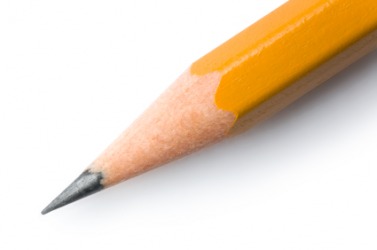- The first wood encased pencils came about because of the discovery of a large deposit of graphite in England in the 16th century. Graphite proved to be superior to lead (which had been used since ancient Rome for writing) as it left a darker mark on the paper. But graphite was soft and brittle so it needed a holder. Sticks of graphite were first wrapped in string, then holders were made of wood for more durability.
- Nuremberg Germany produced the first mass produced pencils in the 17th century.
- The first mass produced pencils weren't painted.
- The Industrial Revolution of the 19th century saw many pencil manufacturers competing and making pencils of different styles. Producers also started to paint their pencils and imprinting them with their brand names and logos.
- Erasers were first put on pencils in the 1850's by an American manufacturer.
- A type of cedar wood called Incense Cedar is used by U.S. pencil manufacturers.
- Most pencils made in the U.S. have erasers on them. European made pencils don't.
- More than half of all pencils come from China, over 10 billion a year.
- The graphite cores of today's pencils are a mixture of graphite and clay. The formula is changed according to the hardness and darkness of the lead desired.
- John Steinbeck the author used an enormous number of pencils, up to 60 a day. His novel East of Eden took over 300 pencils to write.
- Johnny Carson of late night television fame fidgeted with a pencil on his show. They were specially made pencils that had erasers on each end to prevent accidents.
- Lead has not been used in pencils since Roman times, but until the middle of the 20th century lead-based paint was used to paint them which could cause lead poisoning if the pencil was chewed.
- Thomas Edison had his pencils made specially for him. They were shorter and thicker than a standard pencil and had softer lead.
- Mechanical pencils were invented in 1822.
- Penknives were used at first to sharpen pencils. After many attempts by inventors the manual pencil sharpener was invented in 1847.
- There are now pencils on the market that can be bent and even tied into a knot. They are made from a special flexible polymer and lead that will bend together.
Monday, April 5, 2021
Pencils - History and Facts
Some history and little known facts about the common pencil:
Subscribe to:
Post Comments (Atom)



used this for class project thanks!
ReplyDelete